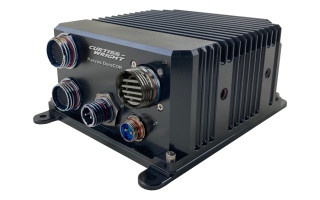Curtiss-Wright
Suite 200
Ashburn, Virginia 20147 [email protected]
https://www.curtisswrightds.com/

Sensor Open Systems Architecture (SOSA): Enabling the next generation of flexible and adaptable radar systems - Story
January 15, 2021In order to keep up with the continued acceleration of new technology and to be able to protect the warfighter from the latest threats, it is essential that we can turn our deployed platforms into adaptable entities that can evolve over time and are not static. The SOSA [Sensor Open Systems Architecture] Technical Standard is the next major step in realizing this goal.
Avionics
Top 10 military embedded blogs of 2020 - Blog
December 22, 2020SCOTTSDALE, Ariz. Our most popular blogs on MilitaryEmbedded.com from 2020 covered topics by guest bloggers from VITA, Crystal Group, Winmate, Curtiss-Wright, and Advantech on subjects such as 6G -stealth fighter planes, hardware security trust, UFOs, rugged tablets, tensors, unmanned fighter jets, small form factors, the kill web and more. Check them out below.
Ruggedized, small-form-factor WAN modules from PacStar chosen to upgrade U.S. Marine Corps data networks - News
December 08, 2020ASHBURN, Va. PacStar, a division of Curtiss-Wright Defense Solutions, has won a $25 million contract to upgrade a portion of the U.S. Marine Corps Combat Data Network (CDN) that the company says will enable the Marine Corps to extend the benefits of advanced network communications to tactical environments.
Avionics
Accelerate open standard adoption to drive warfighter and weapon-system effectiveness - Story
November 19, 2020By David Jedynak
An optimized investment on a leading program for the greater good of the warfighting enterprise will enable the technology breakout and multidomain convergence essential to increasing warfighter and weapon-system effectiveness for the collective national defense.
GPU and FPGA go head-to-head - Story
November 16, 2020Today’s embedded-system designers have a great variety of processor types to select from, with FPGAs [field-programmable gate arrays] and GPUs [graphics processing units] adding their own various advantages and disadvantages for consideration in contrast to the more familiar CPUs [central processing units]. Understanding these characteristics and how FPGAs and GPUs stack up can help system integrators make the right choice when choosing and installing a processor, to be used either individually or in combination with other types of processors.











